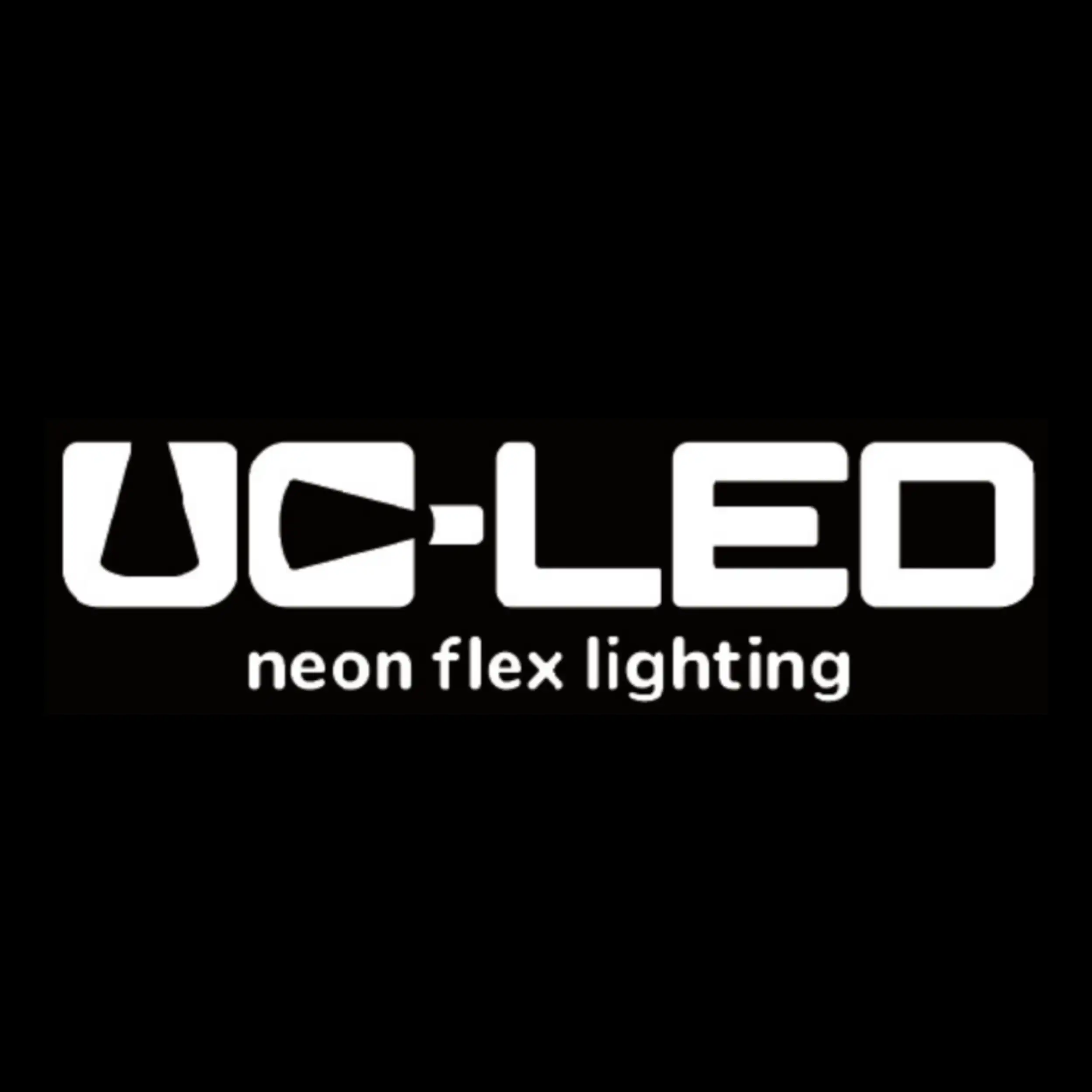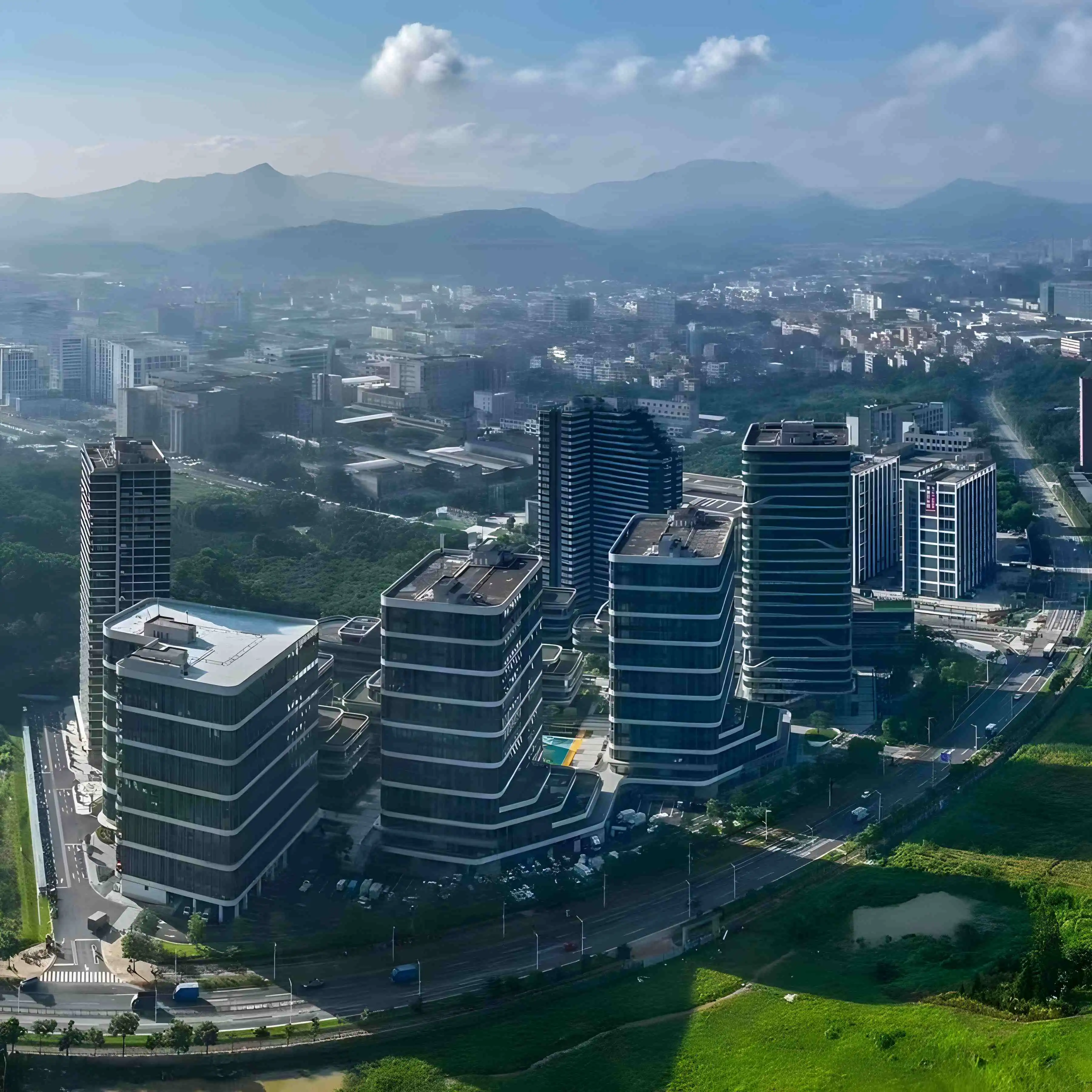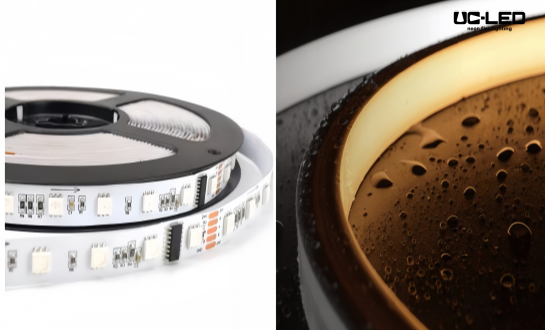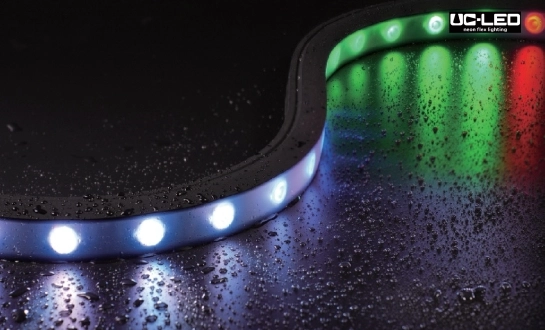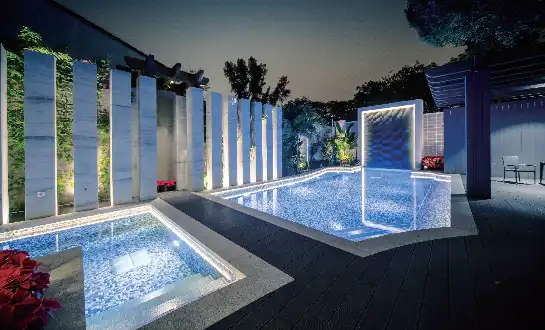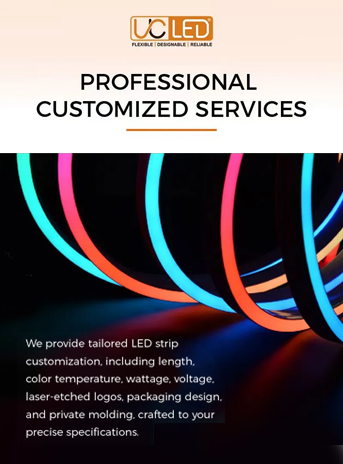Illuminating the Differences: LED Strip Lights vs. Neon Flex
LED Strip Lights: Versatility and Efficiency
LED strip lights have revolutionized the lighting industry with their remarkable versatility and energy efficiency. These thin, flexible circuits populated with light-emitting diodes offer a myriad of applications in both residential and commercial settings. LED strips are known for their low profile, making them perfect for tight spaces and hidden installations.
One of the key advantages of LED strips is their customizability. They can be cut to precise lengths, allowing for seamless integration into various design concepts. Moreover, many LED strips offer RGB or RGBW options, enabling users to create dynamic color-changing effects or select from millions of colors to suit any mood or theme.
Energy efficiency is another hallmark of LED strip lights. They consume significantly less power compared to traditional lighting solutions, translating to lower electricity bills and a reduced carbon footprint. This efficiency doesn't come at the cost of brightness, as modern LED strips can produce impressive luminous output while maintaining their low energy consumption.
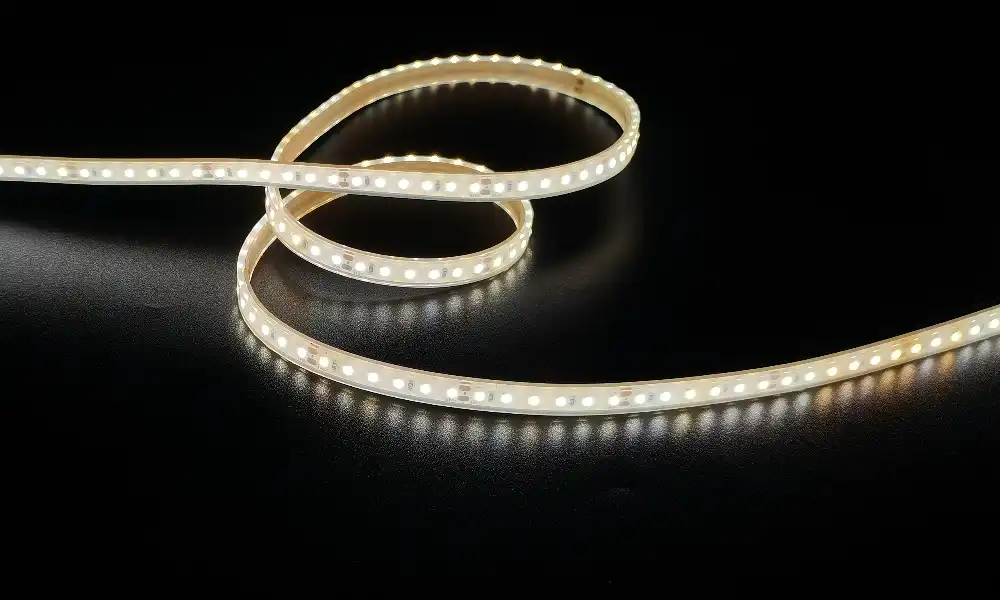
Neon Flex: Classic Aesthetic with Modern Technology
Neon flex, also known as LED neon flex, combines the classic look of traditional neon with the benefits of LED technology. This lighting solution consists of a flexible PVC housing filled with LED chips, creating a continuous, uninterrupted line of light that closely mimics the appearance of traditional glass neon tubes.
The primary appeal of neon flex lies in its ability to create bold, attention-grabbing designs. It's particularly well-suited for outdoor signage, architectural highlighting, and creating artistic light installations. Neon flex offers a softer, more diffused glow compared to LED strips, which can be preferable in certain aesthetic applications.
One significant advantage of neon flex over traditional neon is its durability and safety. Unlike fragile glass tubes filled with gas, neon flex is shatterproof and doesn't contain any hazardous materials. This makes it a more practical choice for public spaces and areas where safety is a primary concern.
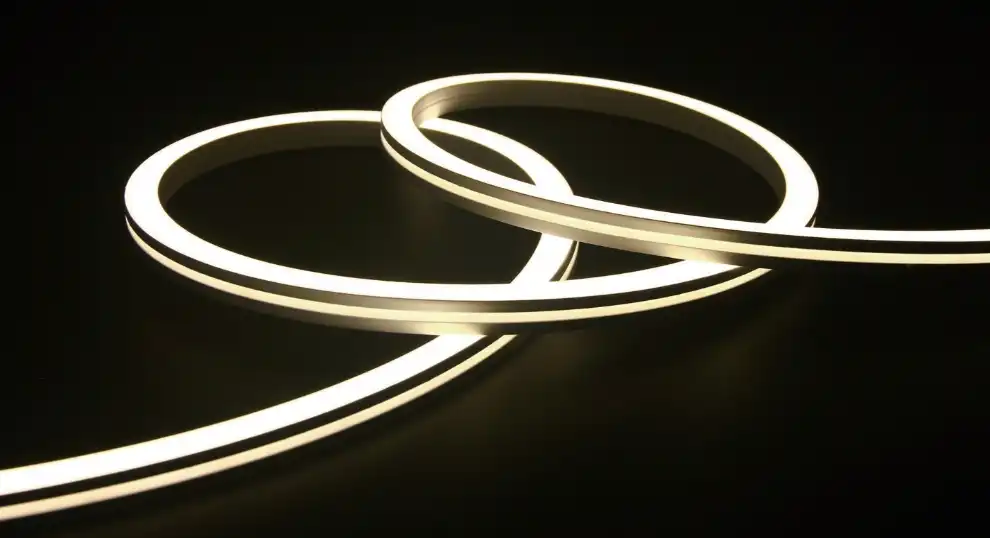
Comparing Performance: LED Strips vs. Neon Flex
Brightness and Color Options
When it comes to brightness, LED strips generally have the upper hand. They can produce a higher lumen output per meter, making them suitable for task lighting and areas requiring intense illumination. LED strips also offer more precise color control, with some high-end models capable of producing any color in the visible spectrum with remarkable accuracy.
Neon flex, while not as bright as LED strips, excels in creating a consistent, even glow along its entire length. This characteristic is particularly valuable in applications where a smooth, uninterrupted line of light is desired. While neon flex typically offers fewer color options compared to RGB LED strips, it compensates with its ability to mimic the warm, inviting glow of traditional neon.
Energy Efficiency and Lifespan
Both LED strips and neon flex are significantly more energy-efficient than traditional lighting options. However, LED strips generally have a slight edge in terms of energy consumption. They can produce more light per watt, making them the go-to choice for projects where energy efficiency is a top priority.
In terms of lifespan, both lighting solutions offer exceptional longevity. High-quality LED strips and neon flex can last up to 50,000 hours or more, depending on usage and environmental conditions. This extended lifespan translates to reduced maintenance costs and less frequent replacements, making both options cost-effective in the long run.
Installation and Flexibility
LED strips are renowned for their ease of installation. They're lightweight, can be cut to size, and often come with adhesive backing for simple mounting. This flexibility allows for creative installations in a variety of settings, from under-cabinet lighting to intricate architectural designs.
Neon flex, while also flexible, typically requires more careful handling during installation due to its larger profile. However, it excels in creating smooth curves and bends, making it ideal for outlining architectural features or creating freeform designs. Many neon flex products are designed for outdoor use and come with IP68 ratings, ensuring they can withstand harsh environmental conditions.
Making the Right Choice for Your Project
Considering Application and Environment
The choice between LED strips and neon flex often comes down to the specific requirements of your project. For indoor applications requiring precise lighting control and color changing capabilities, LED strips are often the superior choice. They're particularly well-suited for task lighting, accent lighting, and creating dynamic lighting scenes in residential or commercial interiors.
Neon flex shines in applications where a bold, eye-catching effect is desired. It's an excellent choice for outdoor signage, storefront displays, and creating atmospheric lighting in bars, restaurants, and entertainment venues. The IP68 rating of many neon flex products makes them ideal for outdoor installations or areas exposed to moisture.
Budget and Long-term Considerations
While both LED strips and neon flex offer long-term energy savings, their initial costs can vary. LED strips are generally more affordable upfront, especially for smaller projects. However, the cost can increase significantly for high-end, densely packed LED strips with advanced features.
Neon flex typically has a higher initial cost, but its durability and low maintenance requirements can make it cost-effective over time, especially for large-scale or outdoor projects. When considering your budget, factor in not just the initial purchase price, but also installation costs, energy consumption, and potential maintenance or replacement expenses over the life of the installation.
Aesthetic Goals and Design Vision
Ultimately, the choice between LED strips and neon flex may come down to the aesthetic you're trying to achieve. If you're aiming for a modern, sleek look with the ability to create intricate lighting patterns or color-changing effects, LED strips are likely your best bet. Their low profile allows them to be integrated seamlessly into various design elements, from furniture to architectural features.
If your goal is to evoke a classic neon aesthetic or create bold, attention-grabbing designs, neon flex is the way to go. Its ability to produce a continuous, uninterrupted line of light makes it perfect for creating striking visual statements, whether you're outlining a building's silhouette or crafting an artistic light installation.
Conclusion
Both LED strips and neon flex have their unique strengths, and the best choice depends on your specific project requirements. LED strips offer unparalleled versatility, energy efficiency, and color control, making them ideal for a wide range of indoor applications. Neon flex, with its classic aesthetic and durable construction, excels in creating bold, eye-catching designs, particularly in outdoor or high-visibility settings.
At QUAN HE Lighting Co., Ltd., we understand that every project is unique. That's why we offer a comprehensive range of both LED strips and neon flex solutions, each designed to meet the highest standards of quality and performance. Whether you're looking for energy-efficient task lighting or aiming to create a stunning visual display, our team of experts is ready to help you find the perfect lighting solution for your needs.
FAQ
Are LED strips waterproof?
Many LED strips are available with IP ratings for water resistance, with some models offering full waterproofing (IP68) for outdoor use.
Can neon flex be dimmed?
Yes, most modern neon flex products are dimmable when paired with compatible controllers.
How long do LED strips and neon flex last?
Both can last up to 50,000 hours or more, depending on quality and usage conditions.
Is neon flex safe for outdoor use?
Many neon flex products are designed for outdoor use with IP68 ratings, making them highly resistant to water and environmental factors.
Illuminate Your Space with QUAN HE's Premium LED Solutions
At QUAN HE Lighting Co., Ltd., we pride ourselves on being at the forefront of LED lighting technology. Our state-of-the-art 5,000㎡+ factory is equipped to produce both high-quality LED strips and innovative neon flex solutions. With certifications including UL, CE, and RoHS, our products meet the highest industry standards for safety and performance. Whether you're looking for customizable LED strips with precise color control or eye-catching neon flex for bold architectural designs, our team of expert engineers is ready to bring your vision to life. We offer tailored OEM and ODM services, ensuring that each product meets your specific project requirements. Experience the QUAN HE different in your next lighting project. Contact us at Linda@uc-led.com to discuss how our premium LED strips and neon flex can elevate your space with unparalleled quality and innovation.
References
1. Smith, J. (2022). "The Evolution of LED Technology in Modern Lighting Design". Illumination Engineering Journal, 45(3), 78-92.
2. Johnson, A. & Lee, M. (2021). "Comparative Analysis of Energy Efficiency: LED Strips vs. Traditional Lighting Sources". Energy and Buildings, 213, 109793.
3. Zhang, L. et al. (2023). "Advancements in Flexible Lighting: A Review of LED Neon Flex Applications". Advanced Optical Materials, 11(2), 2201382.
4. Brown, R. (2020). "Environmental Impact Assessment of LED and Neon Lighting Solutions". Sustainable Cities and Society, 54, 101645.
5. Garcia, M. & Patel, K. (2022). "Design Considerations for Integrating LED Strip Lighting in Architectural Projects". Architectural Lighting Design Quarterly, 18(4), 112-125.
